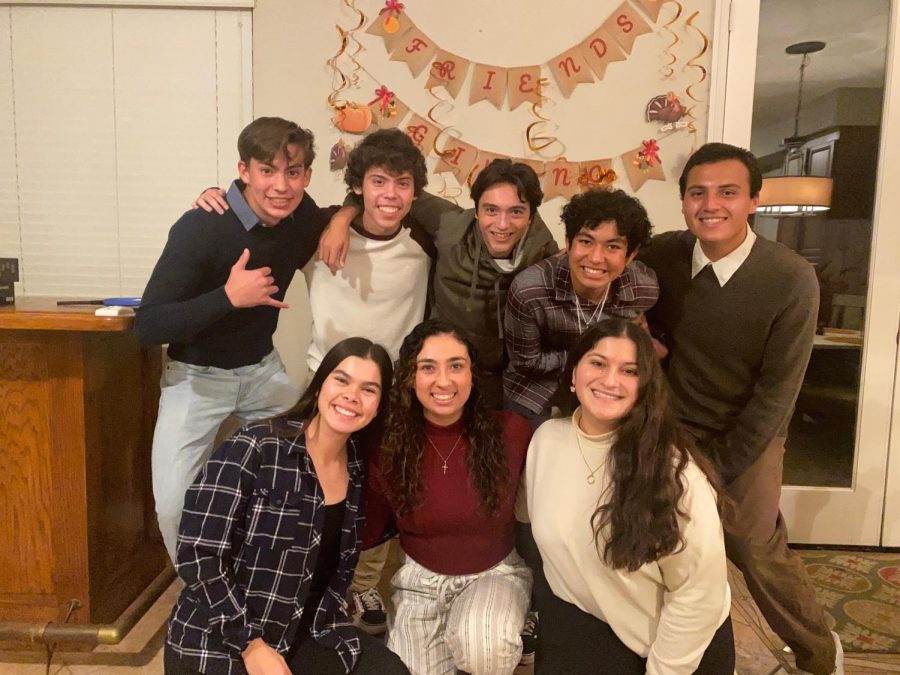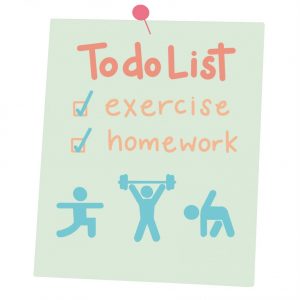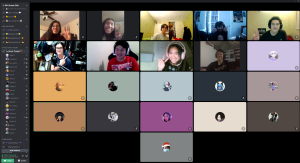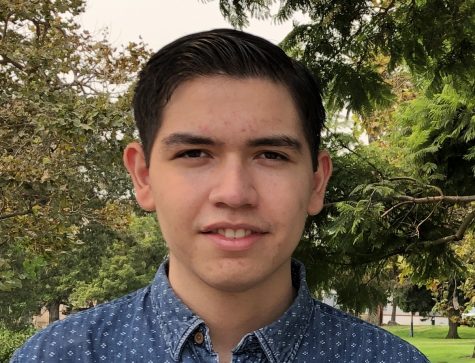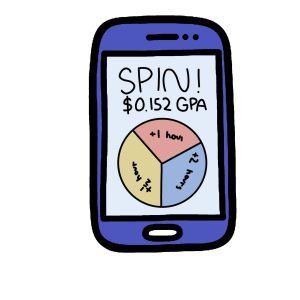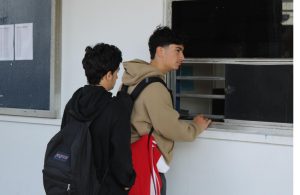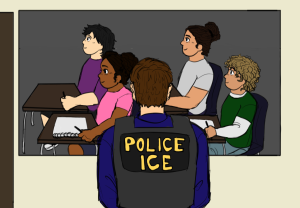“Wanna FaceTime?”
Students turn to new methods of staying in touch
Provided by senior Nicole Hill
Senior Nicole Hill (bottom left) and her friends regularly meet while staying wary of health precautions. Hill says she and her friends get tested for COVID-19 before they gather.
January 8, 2021
“What’s up?” a text reads.
“I legit have so much homework.”
“Same. Wanna FaceTime?”
“Okay, we can stay up all night, lol.”
The video call begins and two blurry faces exchange smiles, familiar with their routine but tense for the long night of work.
For Bonita Vista High (BVH) senior Courtney McDaniel, video calls like these have become a staple throughout her quarantine. McDaniel is one of many BVH students who have turned to new methods of staying in touch amid strict social distancing guidelines due to the COVID-19 pandemic.
Before the outbreak of the pandemic in March, McDaniel spent many afternoons strolling the Bonita mall with her friends before heading home. She rarely had phone calls or video chats with her friends because, according to McDaniel, “I prefer to be with people physically.”
The outbreak of the pandemic, however, changed that. When schools closed in March per social distancing guidelines, McDaniel thought quarantine would last two weeks. But as school closures continued until April, it was clear McDaniel wouldn’t return to the casual hangouts with her classmates.
To reconnect, McDaniel initially turned to social media, using platforms like Snapchat and Twitter to chat with her friends. Usually, she sent amusing pictures and updated her friends on her everyday life.
When the 2020-2021 school year started, McDaniel began using FaceTime to stay in close contact with fellow senior Jennifer Dye.
“I became a big fan of facetiming people. I had a couple Zoom birthday parties [with] friends and that was fun [and] new. But I spend most of my time now with Jenny, usually every night. That’s the main way that I socialize with her because I don’t have very many friends that I consistently talk to,” McDaniel said.
McDaniel usually facetimes Dye without notice. McDaniel says she and Dye spend upwards of four hours on video calls and discuss homework or the classes they attend — sometimes a source of amusement.
“When we started [our Theory of Knowledge class], we were all like, ‘we [don’t] know how this works,’” McDaniel said, chuckling. “We both didn’t know what to do, so we made it a habit to FaceTime during class and be like, ‘hey, like what’s happening?’ so we had someone to talk to. [Class] is harder when you’re isolated and [that] helped make it easier.”
One night, McDaniel spent an entire night on a call with Dye — both overwhelmed with homework — so they could catch up on their assignments together. According to McDaniel, the two spent most of their time in silence, but being in each other’s company made their night a little less tiring.
“I think it’s really valuable to have [someone by your side] even if you don’t like FaceTime. Before, it was annoying [for me] to have someone on the phone all the time because I wasn’t used to it. Now I love it,” McDaniel said.
For senior Nicole Hill, the pandemic likewise changed the way she socialized.
Before the pandemic, Hill spent afternoons at her friends’ house or on bleachers to watch basketball matches with schoolmates. But when quarantine orders were implemented in San Diego, she didn’t know how to adjust.
“We were in the middle of our softball season. That was my first, ‘oh, shoot’ moment. [I asked myself,] ‘What am I going to do?’ My team was my first priority but as [we realized] we weren’t going to have a season, I was thinking about my friends. I didn’t want to hang out and [I wanted] to stay home. It was a strange concern because that’s never been something I’ve had to worry about,” Hill said.
As the pandemic continued, Hill formed a close-knit friend group with whom she stayed in contact through social media platforms like Snapchat. Because each of her friends stayed within their social bubbles, they began organizing occasional gatherings to reconnect while taking social distancing precautions.
Hill says she and her friends regain a sense of normalcy by seeing each other. They typically play games on popular online game ‘Among Us’ or have picnics in local parks.
“Usually we show up wearing masks, but by the end of the time, we end up taking them off just because we feel comfortable around each other. We [take] pictures and [have] a lot of laughs and happiness,” Hill said.
Because her social interactions are dramatically different, though still cherished, Hill believes she became closer to her companions over the past several months.
“I’ve definitely gotten closer to them personally; like a one-on-one relationship rather than a group setting. We can’t take these little things for granted anymore [and] having hangouts makes me appreciate them a lot more,” Hill said.
As the United States reaches over 16 million coronavirus cases, many speculate that in-person meetings can pose health risks. Hill expresses that all her friends take COVID-19 tests and assure they are in good health before meeting up. She believes there may be a small risk but that she and her friends remain safe by taking the necessary precautions.
“The risk is definitely still there [and] I’m worried about [it]. But my friends [and I] know where we’ve been. We keep [our] bubble small. I’m just trying to stay as cautious as possible. If I have symptoms, I make sure to stay home, get tested and stay healthy,” Hill said. “When we [meet], we make sure that everyone’s okay. Some of us have had relatives [with] COVID-19. They obviously stay home and sometimes we even postpone things because of that.”
BVH Nurse Paola Garcia expresses that students can still socialize safely if they follow social distancing orders, including going outdoors, staying separated, wearing masks, avoiding crowds and canceling events if someone feels ill.
“We don’t want to say, ‘don’t go socialize with your friends.’ Socialization is very important for your development and your identity,” Garcia said. “[But] when you go out with your friends, it’s important to [take] the precautions even if everybody’s staying within their bubble. You could be that person in your home that says, ‘Hey, how about instead of going to grandma’s house, we go outside and have a picnic?’ It can be a form of empowerment.”
Garcia believes students have many ways of staying engaged throughout quarantine, especially with outdoors activities.
“There’s other ways to stay connected that are healthier like going for runs, hikes or going out in nature. [And it’s] always ideal [to have] a core group of friends [that] stay within that bubble,” Garcia said.
As forecasts predict the pandemic will prolong onto the next year, social distancing guidelines will continue to limit students’ social interactions. Nonetheless, McDaniel sees the value in human connections, even if through the lens of a camera. For now, they are all she has.
“Having [someone’s] presence, even when [I’m] just doing homework, keeps me on track and engaged in life. It’s not just me and my computer. It’s me and someone else,” McDaniel said.

